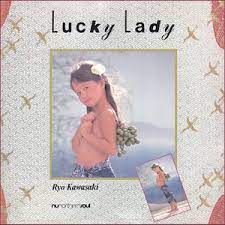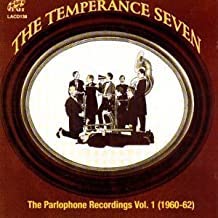
Daily Dose Of Jazz…
John Lee was born June 28, 1952, in Boston, Massachusetts. He is the son of a minister and a social worker. Growing up in Greenwich, Connecticut, Amityville, New York, and Philadelphia, Pennsylvania he began string bass lessons at 10 with Carolyn Lush. At Philadelphia’s Overbrook High School he met drummer Gerry Brown, who together studied at the Philadelphia Musical Academy for two years.
In 1971 Lee began performing with Carlos Garnett and Joe Henderson, and toured with Max Roach thru the spring of 1972 while still a student in Philadelphia. The same year he and Brown relocated to Europe with Den Haag, Holland as their base. Together they toured Europe and recorded in bands led by Chris Hinze, Charlie Mariano, Philip Catherine, Joachim Kühn, and Jasper Van’t Hof.
Moving to New York City in 1974, John played with Joe Henderson, Lonnie Liston Smith, and Norman Connors before joining The Eleventh House with Larry Coryell. The following year he and Gerry Brown signed a recording contract with Blue Note Records and formed a working band. In 1977 they moved over to Columbia Records and began producing records the same year.
From 1982 to 1984, Lee worked with McCoy Tyner, then became Dizzy Gillespie’s bassist, touring and recording with Dizzy’s Quintet, his Big Band, his Grammy winning United Nation Orchestra and the Back to the Future Band that Dizzy co-lead with Miriam Makeba until 1993 when Makeba died.
Lee has performed in over 100 countries around the world and has toured in the bands of Sonny Rollins, James Moody, Jimmy Heath, Pharoah Sanders, Jackie McLean, Gary Bartz, Hank Jones, Walter Davis Jr., Wolfgang Lackerschmid, Alphonse Mouzon, Claudio Roditi, Jon Faddis, Slide Hampton, Roy Hargrove, and Roberta Gambarini, as well as Aretha Franklin and Gregory Hines.
He is a founding member of The Fantasy Band with Chuck Loeb, Marion Meadows, and Dave Samuels. In 1996, at the bequest of Dizzy’s wife Lorraine Gillespie and the Dizzy Gillespie Estate, he became the director and bassist of the Dizzy Gillespie Alumni All-Stars as well as the Dizzy Gillespie All-Star Big Band, and the Dizzy Gillespie Afro-Cuban Experience. They have recorded five albums and toured extensively around the world.
In 2009 he co-founded the jazz recording label JLP (Jazz Legacy Productions), with partner Lisa Broderick. As a producer he has produced over 60 albums and CDs, and as a recording engineer he has recorded and mixed over 100 albums and CDs.
Bassist John Lee, who is a Grammy winning record producer and audio engineer, continues to explore the boundaries of music.
More Posts: audio engineer,bandleader,bass,history,instrumental,jazz,music,record producer

Daily Dose Of Jazz…
Ryo Kawasaki was born February 25, 1947 in Kōenji, Tokyo during Japan’s recovery in the early post World War II period. His mother encouraged him to take piano and ballet lessons, and he took voice lessons and solfege at age four and violin lessons at five, and he was reading music before elementary school. As a grade scholar, he began a lifelong fascination with astronomy and electronics. When he was 10, he bought a ukulele and at 14 he got his first acoustic guitar. The album Midnight Blue by Kenny Burrell and Stanley Turrentine inspired him to study jazz.
In high school, he began hanging out at coffee-houses that featured live music, formed a jazz ensemble and built an electronic organ that served as a primitive synthesizer. By the time he was 16, his band was playing professionally in cabarets and strip joints. Although he continued to play music regularly, he attended Nippon University, majored in physics and earned his Bachelor of Science Degree. He also did some teaching and contest judging at the Yamaha musical instrument manufacturer’s jazz school. Additionally, he worked as a sound engineer for Japanese Victor Records and BGM/TBS Music, where he learned mixing and editing.
He recorded his first solo album for Polydor Records when he was 22. And was voted the No. 3 jazz guitarist in a Japanese jazz poll. He spent most of the next three years working as a studio musician on everything from advertising jingles to pop songs including countless radio and TV appearances. He recorded his second album for Toshiba when he was 24. He played with B.B. King at a blues festival and also met George Benson and they jammed for five hours at Kawasaki’s house.
Moving to New York City in 1973 he was offered an immediate gig with Joe Lee Wilson playing at the Lincoln Center as part of the Newport Jazz Festival. Soon Ryo was jamming regularly as part of the loft scene and was invited to play with Bobbi Humphrey. A few months later Gil Evans invited him to join The Gil Evans Orchestra which was then working on a jazz recording, The Gil Evans Orchestra Plays the Music of Jimi Hendrix. He would go on to record on Evan’s There Comes a Time. He became the guitarist in the Chico Hamilton Band, made his debut U.S. album, Juice, in 1976 for RCA and was one of the first Japanese jazz artists to sign with a major label in the States.
He explored Music of India, recorded with Dave Liebman and toured European jazz festivals with Joanne Brackeen as a piano/guitar duo and they recorded a pair of albums. In the mid-1980s, Kawasaki drifted out of performing music in favor of writing music software for computers. He also produced several techno dance singles, formed his own record company called Satellites Records, and later returned to jazz-fusion in 1991.
He continued to release albums up to 2017 and had two retrospective Ep’s released spanning years of 1976~1980 and 1979~1983. Guitarist and keyboardist Ryo Kawasaki transitioned on April 13, 2020 in Tallinn, Estonia at the age of 73.
More Posts: audio engineer,bandleader,composer,guitar,history,instrumental,jazz,keyboard,music

Daily Dose Of Jazz…
John R. T. Davies was born John Ross Twiston Davies on March 20, 1927 in Wivelsfield, Sussex, England. A trombonist, trumpeter and alto saxophonist, in the early 1950s he was a member of the Crane River Jazz Band led by Ken Colyer which spearheaded interest in the original New Orleans jazz style. Later he achieved chart success with the 1960s jazz revival band The Temperance Seven. The group’s recording of You’re Driving Me Crazy reached the top of the charts in 1961.
Considered by many as the world’s leading specialist in the art of sound restoration, he specifically focused on jazz and blues existing on pre-magnetic tape media such as shellac 78s. He was particularly interested in recordings from 1917 to 1940. Davies developed many methods for restoring old recordings and disliked modern techniques for removing surface noise.
While he appreciated attempts to clean up recordings and to create new versions of old recordings for modern audiences (e.g. the stereophonic remastered recordings by Robert Parker), in general he said he preferred remasterings which “keep everything and do as little as possible” to the original recording, and thought the remastering engineer should “Add nothing, take nothing away”. The presence of his name on the credit of a reissue is generally considered the mark of a quality product. He started his own record label called Ristic in the late 1940s which produced reissued recordings from 1949 to 1972.
Davies was always generous with his time and his collection and wanted it to be available for other people to use for research and reissues after his death. The Borthwick Archive at York University have accepted the entire collection and are housing it in ideal conditions, and making a transfer suite available so that his wish can be carried out. Information about the collection collated from the collection catalogue is also now available online from the University of York Digital Library and a small selection of the tracks have been made available to listen online.
Alto saxophonist and audio engineer John R. T. Davies, who specialized in restoring classic jazz records, passed away on May 25, 2004.
More Posts: audio engineer,history,instrumental,jazz,music,saxophone




